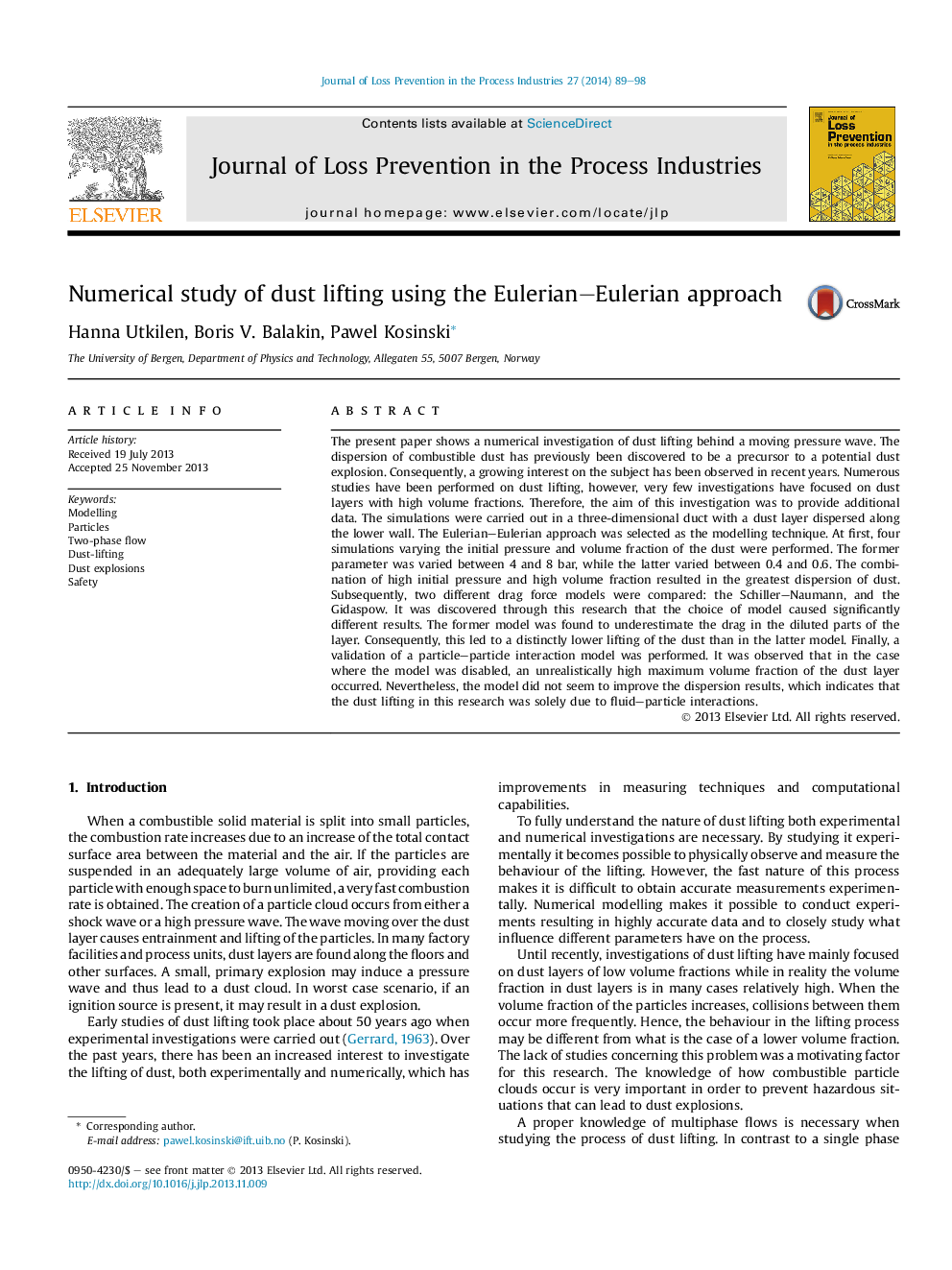| کد مقاله | کد نشریه | سال انتشار | مقاله انگلیسی | نسخه تمام متن |
|---|---|---|---|---|
| 586345 | 1453281 | 2014 | 10 صفحه PDF | دانلود رایگان |
• Simulations of dust lifting behind strong pressure waves are shown.
• Initial dust concentration was high and thus realistic.
• Solid-pressure model was used for simulations.
• Two different drag force modes were compared.
• Influence of particle–particle and particle–fluid interactions was discussed.
The present paper shows a numerical investigation of dust lifting behind a moving pressure wave. The dispersion of combustible dust has previously been discovered to be a precursor to a potential dust explosion. Consequently, a growing interest on the subject has been observed in recent years. Numerous studies have been performed on dust lifting, however, very few investigations have focused on dust layers with high volume fractions. Therefore, the aim of this investigation was to provide additional data. The simulations were carried out in a three-dimensional duct with a dust layer dispersed along the lower wall. The Eulerian–Eulerian approach was selected as the modelling technique. At first, four simulations varying the initial pressure and volume fraction of the dust were performed. The former parameter was varied between 4 and 8 bar, while the latter varied between 0.4 and 0.6. The combination of high initial pressure and high volume fraction resulted in the greatest dispersion of dust. Subsequently, two different drag force models were compared: the Schiller–Naumann, and the Gidaspow. It was discovered through this research that the choice of model caused significantly different results. The former model was found to underestimate the drag in the diluted parts of the layer. Consequently, this led to a distinctly lower lifting of the dust than in the latter model. Finally, a validation of a particle–particle interaction model was performed. It was observed that in the case where the model was disabled, an unrealistically high maximum volume fraction of the dust layer occurred. Nevertheless, the model did not seem to improve the dispersion results, which indicates that the dust lifting in this research was solely due to fluid–particle interactions.
Journal: Journal of Loss Prevention in the Process Industries - Volume 27, January 2014, Pages 89–98
